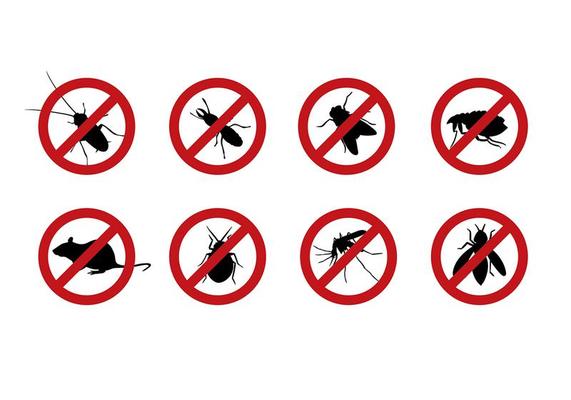Discovering Infestation and Therapy Approaches on the planet of Bug Control
The landscape of bug control incorporates a myriad of challenges, specifically as problems of usual family pests proceed to evolve. By integrating preventative procedures with sophisticated monitoring techniques, such as Integrated Pest Administration (IPM), house owners can much better guard their environments.

Usual Household Pests
When it concerns managing our living areas, comprehending typical family bugs is critical. These parasites not just interrupt our convenience yet can additionally posture wellness threats and damages building. The most prevalent household pests consist of ants, roaches, rats, termites, and bed insects.
Ants, commonly seen foraging in kitchen areas, can pollute food and establish large swarms. Roaches, understood for their durability, can set off allergies and spread virus. Rats, including mice and rats, can create architectural damage and carry conditions like hantavirus and salmonella. Termites, usually described as "silent destroyers," can compromise the honesty of wood structures, bring about pricey repair services. Bed bugs, although not condition service providers, can trigger significant pain with their attacks and cause mental distress.
Acknowledging the signs of these bugs, such as droppings, nests, or bite marks, is crucial for early treatment (Pest Control Lockhart). Appropriate hygiene methods, securing entry factors, and maintaining a clutter-free setting are effective preventative actions. By identifying these usual household bugs and understanding their habits, homeowners can take positive steps to minimize infestations, making sure a healthier living atmosphere
Recognizing Insect Infestations
Bug problems can rise promptly, transforming a small annoyance into a significant problem if not dealt with quickly. Typical elements contributing to invasions include poor sanitation, structural vulnerabilities, and seasonal changes that drive pests indoors.
Identifying the sort of parasite is essential, as various varieties show different habits and reproductive rates. For instance, rats might develop nests in concealed areas while insects like cockroaches grow in wet atmospheres. Early detection often depends upon identifying indications such as droppings, gnaw marks, or uncommon noises, which can suggest a problem prior to it ends up being severe.
Warm, damp environments can help with the fast growth of parasite populaces, while adjustments in landscaping or building can accidentally create favorable settings. An informed method to recognizing these dynamics lays the foundation for effective insect monitoring approaches in the future.
Treatment Techniques and Strategies
Reliable treatment methods and methods are crucial for mitigating insect invasions and recovering a secure environment. A multifaceted method is commonly best, including chemical, organic, and mechanical strategies tailored to the specific insect and the seriousness of the invasion.
Chemical therapies consist of the usage of pesticides and herbicides, which can successfully remove parasites. Nonetheless, correct application and adherence to safety and security standards are crucial to minimize risks to human beings and non-target microorganisms. Integrated Insect Management (IPM) encourages the cautious use chemicals as a last resort, counting rather on tracking and click for source threshold levels to determine treatment requirements.
Organic control techniques involve presenting natural killers or parasites to reduce bug populations. This strategy is progressively popular, especially in agricultural setups, as it promotes ecological sustainability.
Mechanical methods, such as catches and barriers, supply immediate remedy for pests without presenting chemicals. Options consist of sticky catches for bugs or physical obstacles for rodents.
Inevitably, the choice of therapy approach ought to take into consideration the particular parasite, the environment, and possible impacts on human health and wellness and ecosystems. A balanced mix of these strategies can successfully take care of infestations while advertising lasting pest control options.
Safety Nets for House
Proactively resolving pest problems prior to they rise is vital for preserving a healthy and balanced home setting (Pest Control Lockhart). Implementing efficient safety nets can significantly decrease the probability of problems, inevitably safeguarding both your home and wellness

Appropriate landscaping likewise plays a vital function in prevention. Keeping shrubs and trees cut away from the residence lowers the opportunities of bugs discovering their method indoors. Guarantee that drainage systems are operating effectively to avoid standing water, which can draw in insects and other insects.
Last but not least, regular evaluations are advisable. Consistently examining for indications of pest task enables check out this site very early intervention. By adopting these safety nets, homeowners can develop an environment that is much less congenial to pests, consequently enhancing their total lifestyle and reducing the requirement for extensive bug control interventions.
Industrial Pest Control Methods
An extensive strategy to commercial parasite control is important for organizations aiming to preserve a safe and hygienic setting. Effective methods entail a combination of routine inspections, worker training, and the execution of Integrated Pest Administration (IPM) techniques.
Regular evaluations make it possible for early detection of bug task, allowing for timely treatment. Organizations should establish a regular timetable for these analyses, focusing on high-risk areas such as kitchen areas, storage space areas, and waste disposal sites. important source Worker training is similarly critical; staff ought to be informed on the indicators of parasite infestations and the importance of reporting them right away.
Carrying out IPM techniques aids mitigate pest issues sustainably. This includes habitat modification, such as sealing entry points and decreasing clutter, as well as employing natural deterrents before resorting to chemical treatments.

Moreover, collaborating with a licensed pest control service provider guarantees access to expert expertise and innovative therapy choices. This partnership can result in customized pest control intends customized to the certain requirements of business, minimizing risks and boosting general effectiveness. Ultimately, an aggressive and enlightened technique fosters a pest-free environment, guarding both public health and wellness and company credibility.
Conclusion
In conclusion, efficient pest control requires a thorough understanding of common family pests and their habits, paired with targeted treatment techniques. Applying preventive procedures along with treatment techniques such as Integrated Parasite Management and biological control improves the capacity to mitigate infestations.